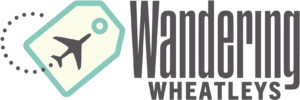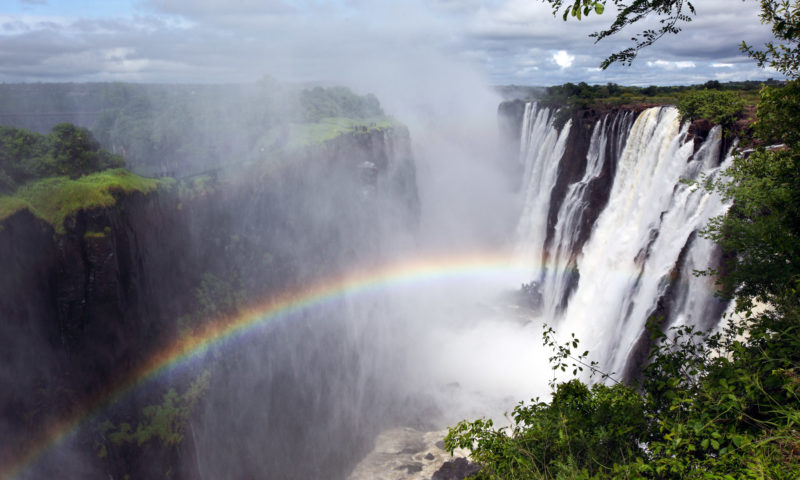Growing up, show after show on National Geographic would have incredible glimpses of animal life. I would sit glued to the TV, soaking up knowledge like a sponge. Learning about animals that survive in harsh conditions, huge inland delta fish, leopard reproduction, how lions hunt, the migration of elephants, and the Kalahari people and their storied pasts. It was like a game of Roulette filled with cool animal facts. Each of them had one thing in common. They were filmed in Botswana.
Botswana is a large landlocked country in Southern Africa bordering Namibia, South Africa, and Zimbabwe. Seventy-five percent of the land is the Kalahari desert. It is one of the world’s flattest countries, and driving through most of Botswana is quite boring. Few ever venture into the heart of Botswana, the Central Kalahari desert. It is no easy task, due to its remoteness and enormous rolling sand dunes. Most come to Botswana to go on safari to the Okavango Delta and Chobe Game Reserve. Of all the safaris we went on during our time in Africa in 2016, Botswana stands out among them all.
Botswana Safari
A Botswana safari is some of the most extreme, thrilling, and remote safaris you can find in Africa. Driving on safari in Botswana is not something to be taken lightly. Tracks are two-foot deep sand pits, crossing three-foot deep rivers, for days at a time. The amount of land is vast, and only a small percentage can be explored.
Each night you move to the next camp, further and further in the bush. We had a leopard pacing outside of our tent one night. Hours earlier in the early hours of the night, we heard the strangest noises ever. It was a ticking sound in the distance. It got closer and we were awoken by the sounds. The sounds got even closer, and then we could make out that it was a group of nearly fifteen rare wild dogs. They were chasing something, and that something ran right next to our tent. One of the wild dogs brushed against the tent and hit our rain fly. Within seconds, the noises were in the distance again, and we fell back asleep.
Somehow, animals don’t seem to bother you when you are in a tent. But you have to be careful when going outside. Botswana is a place where you can’t even walk from your tent or car to the ablution (toilets) block at night. People have been mauled by leopards in the past. With no fences, it is just you and the animals. These safaris take much planning. Everything you need has to be taken with you. There are no stores, cell service, or help in the bush.
If any of this sounds fascinating, that is because it is. There is no other place like Botswana.

Content and photographs provided by Yana Kogan and Timon.
Disclaimer: This post may contain affiliate links. If you make a purchase or booking through one of our links we may earn a small commission (don’t worry, it’s at no extra cost to you).
Botswana Country Guide
Visa
Depending on your nationality, there likely is no visa requirement to visit Botswana for stays up to 90 days. A tourism levy of $30 USD is required upon entry. For countries that do require a visa, a visitor’s visa costs $107 USD. Please refer to the Botswana Embassy website for information on which countries require a visa and the application process. A passport must be valid for 6 months upon entry.
Language
The official language in Botswana is English. Setswana is the national language and is spoken by the majority of the population.
Currency
The Botswana Pula is the national currency. For tours, some companies also price in USD. As of May 2022, the Pula is worth:
- $1 = 12.07 Pula
- €1 = 12.93 Pula
Costs

The top attraction in Botswana is the world-class safaris. The top three parks in Botswana are Chobe National Park, Moremi Game Reserve, and Okavango Delta. Moremi is the most expensive park for game drives. Chobe is the best park to visit for those on a budget. A popular option for backpackers and those on safari is to rent a 4WD vehicle and self-drive on safari. This helps save a lot of money when visiting the national parks.
- Chobe National Park’s entry fee is 70 Pula. A game drive costs around 300 Pula. A Chobe River cruise costs around 250 Pula.
- Okavango Delta’s traditional mokoro boat experience in the delta costs around 350 Pula. A scenic 45-minute flight cost 700 – 900 Pula. Inland delta full-day boat safaris cost around 1,200 Pula.
- Moremi Game Reserve park entry fee is 120 Pula per day plus a vehicle fee of 50 Pula per day. Campsites cost between 200 – 400 Pula. A hired one-day game drive costs around 1,200 Pula.
- Nwetwe Salt Pan and meerkat tour costs 1,200 Pula.
Transportation
The best way to get around Botswana is by renting a car. If you plan to go on a safari, it is better to spend more money on your rental and hire a 4WD vehicle. This will save you tons of money as you can do game drives on your own versus paying to hire a driver and vehicle for each day.
Depending on your travel plans, it may make sense to hire a vehicle in Johannesburg, South Africa, Gaborone, or Maun. If you are coming from South Africa and returning there, it will save you money by renting in Johannesburg, but takes two days to get to Northern Botswana. Crossing the border into Botswana requires a certificate and some rental agencies tack on an extra cost.
- Johannesburg rentals – You can hire a small for $15 USD per day or a 4WD vehicle starting from $80 USD per day without any equipment (returning to Johannesburg).
- Gaborone rentals – You can hire a small car for $20 USD per day or a 4WD vehicle starting from $100 USD per day without any equipment.
- Maun rental – You can hire a 4WD in Maun with a tent and equipment starting from $180 USD per day.
Accommodation
Accommodation in Botswana is a range of hotels, guesthouses, backpackers, and drive-in safari camps. The options also come in a range of prices. Hotels are expensive in Botswana. It is better to stay at a guesthouse or if you have camping gear, stay at a drive-in caravan camp. Here are some suggested places to stay in Botswana:
- Gaborone – Birdville BNB Guesthouse is a good guesthouse with an outdoor swimming pool, a shared lounge, and a garden and the Capital Guest House is a high-rated one with good rooms.
- Palapye (border town with SA) – This is a common town to stay in when traveling between Johannesburg and Kasane or Maun. There is no reason to stop here other than a night’s sleep. There are several lodges in town with rooms or stay at Camp Itumela for $20 per vehicle.
- Maun – The most popular place to stay is Old Bridge Backpackers for camping and they have private double tents. Motsebe Backpackers is another option. We liked Old Bridge, as they also were able to set up activities in the area with some of the best prices available. For a nice guesthouse, check out the Jump Street Chalets with private rooms.
- Kasane – Thebe River Safaris is a wonderful place to stay with friendly staff and a great bar and a few campsites. For a nice guesthouse, check out the Leeville Guesthouse.
- Gweta– Gweta Lodge is the best option with wonderful hosts while staying in Gweta.
Food
Food in Botswana is pretty bland and very meat-centric. Traditional meals typically include pap (maize porridge) and meat stew. It is common to buy your own groceries and cook a BBQ each night while camping. Spar and Choppies are the two common supermarkets in Botswana which are located in most towns. Botswana is a tough place to find local food for vegetarians or vegans.
Botswana Safari Guide

Okavango Delta
One of the main highlights of Botswana is one of the world’s largest inland rivers delta. It floods once a year from May-July, bringing animals from thousands of kilometers away. It is tough to get far inland into the delta due to the floodplains; however, there are many options to view animals in this park.
A traditional mokoro boat ride is common, typically a half-day tour. Boat rides last a couple of hours upriver followed by a walking safari and lunch. Game drives are possible, but it is suggested to go on a tour due to the lack of roads. The best way to view the delta is by scenic flight. Flights leave from Maun and typically last 45 minutes.
Moremi Game Reserve
Located just next to the Okavango Delta, you can find the big five at Moremi. It is known as one of the best game reserves in Africa, and many come here to self-drive on safari. It is serious 4×4 driving, at times through very thick sand. For the ultimate adventure, you can drive through Moremi to Chobe up to Kasane all through the national parks. Maun is the base for activities in the Okavango Delta and Moremi. Here you can stock up on supplies before heading out for a safari.
Gweta
Gweta is the base of several salt pans in central Botswana. Central Botswana is a unique area with several massive salt pans. The Nwetwe Pan, Sua Pan, the Makgadikgadi, and the Nxai Pan are all neighbors, yet distinct in their own way. The best attraction is the meerkats. They are found throughout this region, but the best place for a tour is the Nwetwe Salt Pan. A tour includes an overnight stay at the salt flat while sleeping under the stars. There are two visits to the meerkats on the tour.
Kasane
Kasane is the base for Chobe National Park. One of Africa’s premier safaris, Chobe is an enormous park that could take several days to cover. It is world-class, has the second most resident elephants of any park in Africa, and is one of the most densely concentrated pockets of animals in Africa.
The Chobe River feeds from the Zambezi and nearby Victoria Falls, which floods annually and animals migrate and flock to the river’s edge. Kasane is the base for activities in Chobe or a day trip to Victoria Falls. This small town has the supplies you need for a safari and is also great for those who just come for day excursions such as game drives or river cruises.





